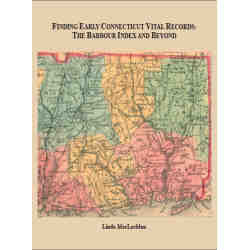If you profited from reading Mr. Greenwood’s sage advice on land records and don’t as yet own a copy of his book, you may wish to read the following review from the Winter 2018-2019 issue of the St. Louis Genealogical Society Quarterly.
The Researcher’s Guide to American Genealogy. 4th edition.
By Val D. Green wood.
Baltimore: Genealogy Publishing Co., Inc., 2017.
778 pages. Softcover. $49.95.
Available at www.genealogical.com.
This is the 4th edition of a book that has been, and continues to be, one of the best written and most comprehensive guides on the subject. It has been greatly enlarged, ostensibly because there is so much additional online information available since the third edition was published in 2000.
The first few chapters of this book are definitely more verbose than earlier editions. That said, it is a much more captivating read and is more than a text book or instruction manual, if you will. It is more comparable to a conversation with directions interspersed into the text. This is especially true of the first four chapters, which begin by explaining how this work called genealogy must be done and why. The second chapter of this section talks about “language changes and handwriting” and is fascinating and amazing in its thoroughness . To quote from page seventy-seven, “You must use common sense in your approach. Common sense is practical judgement along with sound reasoning.”
While the first chapters provide a background for this common-sense approach, the meat of the book follows in chapters on records and their uses. Each chapter is an average of twenty-eight pages long, serving up suggestions on best use with a completeness guaranteed to impress. Compared to earlier editions, this one is packed with information on where to look online to help your search. One such section compares state history to the census records and includes details about special enumerations that were done before territories became states. This may provide new places to look for your ancestor. The author notes that because censuses are now digitized and indexed online, there is little need for the Soundex system so many of us used in the early days. But due to spelling and transcription errors, there are still cases where the Soundex can be a useful tool, and the author provides details on where to learn more.
This book also contains suggestions and locations of helpful lists, whom to ask, terms and definitions, types of deeds, details on probate, guardianship’s, property rights, and much more. One chapter deals with church records and how to find them, recommending not to be afraid to call churches or ministers. Be polite but tackle the truth. I was surprised to find a section not just on gravestones but on interpreting them as well. While there are no lists of repositories for city or county records, Greenwood does explain where to look and how to find them, often using examples. I found myself thinking, “Oh, I never thought of that” or “I never thought of it that way,” and stopping to go pursue the thought. I certainly do not think of myself as an expert, and after reading this book I know so much more.
The only suggestion I would have for the publisher is that a book this size should be hard bound, and/or larger, thus slimmer, though the price might have made that prohibitive. It is already an expensive tome.
Even those who have a long history doing genealogy would benefit from reading this book, or at least reviewing a chapter of interest. This is an amazing compendium, well written, interesting and informative, every genealogist should either own a copy or know where to access one. If I were giving stars, this would be a tenner. My recommendation is to go find it and read it.
Reviewed by Mary Lee Chivetta




